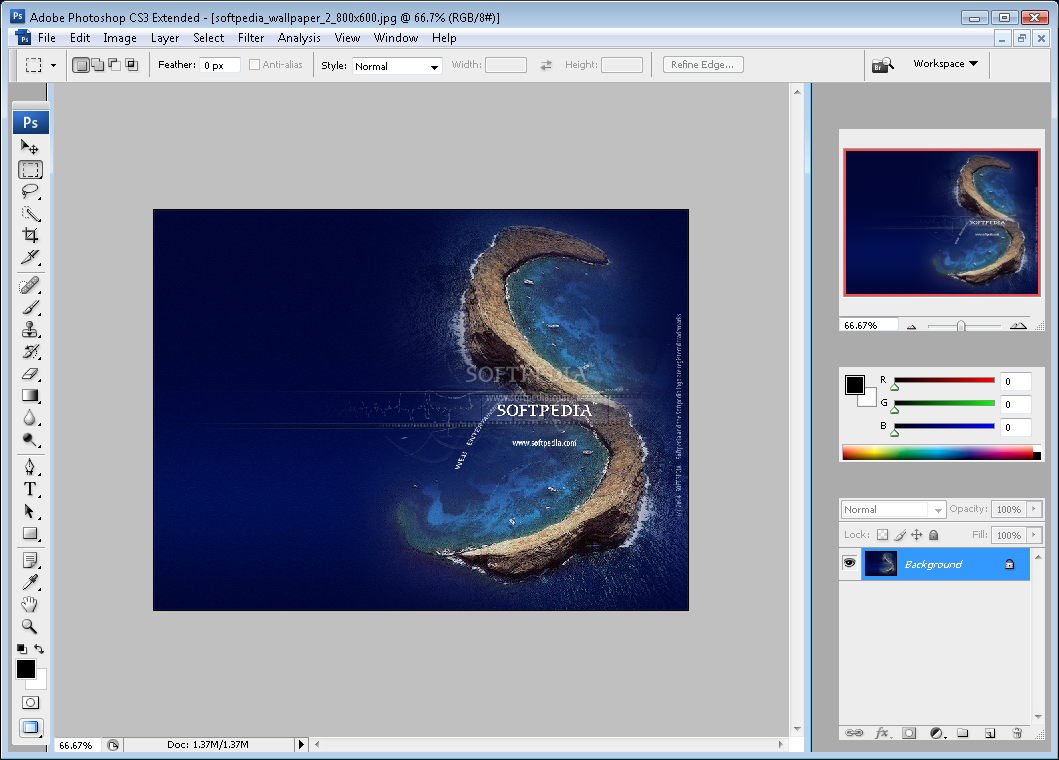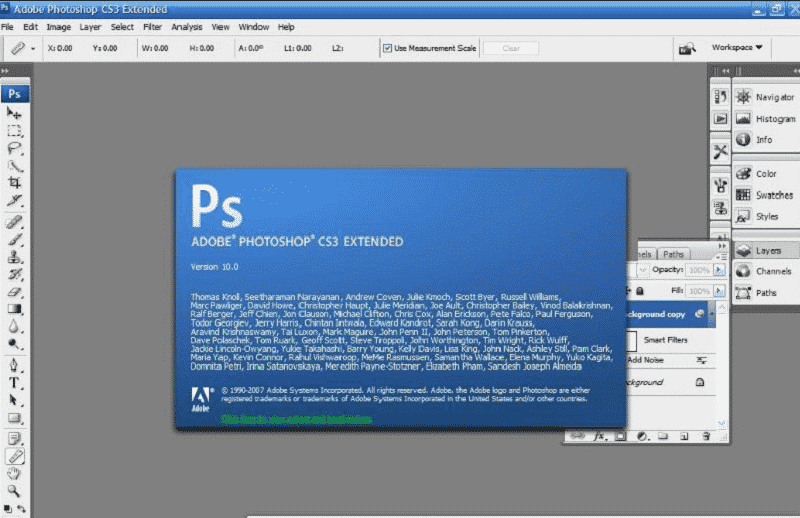Adobe Stock Photos offers a fantastic resource for creatives, allowing users to access a vast library of high-quality images. Whether you're designing a marketing campaign, creating social media content, or working on a personal project, stock photos can elevate your visual storytelling. With the seamless integration of these stock images into Adobe Creative Suite 3 (CS3), you can enhance your designs right from the workspace you’re already familiar with.
But what exactly is Adobe Stock Photos? In essence, it’s a subscription-based service that provides access to millions of royalty-free images, illustrations, and videos. This means that for a fixed fee, you can download and use any photo you select without worrying about licensing issues. It’s ideal for busy professionals who need to find the perfect image quickly and efficiently.
Aside from convenience, Adobe Stock Photos is beneficial because of the variety. The platform showcases images from talented photographers and artists around the globe. Whether you need breathtaking landscapes, dynamic action shots, or trendy lifestyle photography, Adobe Stock has you covered. Plus, with advanced search capabilities, you can easily hone in on exactly what you need, saving time and effort.
In a nutshell, utilizing Adobe Stock Photos within CS3 opens up a world of creative possibilities. You have the flexibility to experiment with different visual styles, thus enhancing your projects with stunning imagery at your fingertips.
Setting Up Adobe CS3 for Stock Photo Usage

Alright, now that we've introduced Adobe Stock Photos, let’s dive into how to set up Adobe CS3 for a smooth stock photo experience. Getting your workspace organized and configured properly is key to maximizing your efficiency and creativity.
Here’s a step-by-step guide:
- Update Adobe CS3: First things first, make sure your Adobe CS3 is updated to the latest version. This will ensure compatibility with the Adobe Stock service and optimize performance.
- Install the Adobe Creative Cloud Application: If you don’t have it yet, download and install the Adobe Creative Cloud application. This will simplify the process of accessing Adobe Stock directly from your programs.
- Configure Preferences: Go to your Adobe CS3 preferences and enable Adobe Stock integration. This will allow you to search and license stock photos seamlessly from within your workspace.
- Login to Your Adobe ID: Make sure to log into your Adobe account. If you don’t have one, you’ll need to create it. This step is crucial for accessing your purchased stock images.
- Familiarize Yourself with the Adobe Stock Panel: Once set up, open the Adobe Stock panel within your CS3 apps. Take some time to explore the search features, categories, and your downloaded images.
- Utilize Collections: Organize your favorite stock photos into collections. This feature helps you quickly access frequently used images without having to search for them every time.
By following these steps, you’ll have Adobe CS3 primed for stock photo usage, making your creative projects easier and more enjoyable. The more you integrate stock photography into your workflow, the more versatile your designs will become!
Also Read This: how to submit vector art to adobe stock
Accessing Adobe Stock Photos from CS3

Accessing Adobe Stock Photos from CS3 is a straightforward process, but it can sometimes be a bit tricky if you're new to it. Luckily, I'm here to guide you through it step-by-step!
First, you'll need to ensure that you have a valid Adobe ID, as this will grant you access to the Adobe Stock library. If you don’t have one, you can easily create it on the Adobe website. Once you’ve got that sorted, follow these steps:
- Open Adobe CS3: Launch your CS3 application. This could be Photoshop, Illustrator, or any other CS3 program you’re working in.
- Sign in to Adobe: Look for the "Sign In" option. Once you’re logged in with your Adobe ID, you’ll notice some new options become available.
- Access the Stock Photos: Navigate to the “File” menu. You’ll find “Find Stock” or “Stock Photos” listed there. Click on it to open the Adobe Stock interface.
- Browse or Search: Once you’re in the Stock interface, you can either browse featured images or search for specific photos using keywords.
Voilà! You’re now ready to peruse through a myriad of high-quality stock photos! Remember, accessibility can vary depending on your subscription level, so take a look at what’s included in your plan for the best experience.
Also Read This: How to Make Money Selling Photos on iStock
Searching for the Perfect Stock Image

When it comes to finding the perfect stock image in Adobe, it’s more than just a simple keyword search. With the right strategies, you can streamline the process and uncover some truly stunning visuals. Here’s how to make your search more effective:
1. Use Specific Keywords: Rather than using vague terms, try to be specific. For example, instead of searching for "city," you could search for "downtown New York at sunset." This will yield results that align more closely with what you’re envisioning.
2. Filter Your Results: Adobe Stock allows you to filter images based on various criteria such as:
- Orientation (Landscape, Portrait, Square)
- Color (Monochrome, Bright, Dark)
- People (with people, without people)
- Content type (Photos, Illustrations, Videos)
3. Use Advanced Search Options: Discover advanced search settings by clicking on the filter icon. This gives you more control over the types of images you want to view.
4. Save Your Favorites: As you find images that catch your eye, don't hesitate to save them to a separate folder within Adobe Stock. This way, you can easily revisit your favorites without having to start from scratch!
By implementing these tips, you’ll make the often overwhelming task of searching for stock images a breeze. Happy hunting!
Also Read This: Creating Copyright Information for Adobe Stock Images
Downloading and Importing Stock Photos into CS3
When you're diving into the art of utilizing stock photos in Adobe Creative Suite 3, the first step is all about downloading and importing those images seamlessly. It's like setting the stage before the show begins, and trust me, it’s easier than you might think!
Here’s a straightforward guide to get you started:
- Choose Your Stock Photo Source: Before anything else, you need to choose a stock photo provider. Adobe Stock is a popular option, but there are plenty of others out there, such as Unsplash or Shutterstock. Make sure the images you select align with the vision you have for your project.
- Downloading the Images: Once you've selected your images, go ahead and download them. Most stock photo websites will provide images in various resolutions, so pick the one that best suits your needs. Don’t forget to check if you need to purchase a license for commercial use!
- Importing into CS3: Now onto the fun part—importing! Open Photoshop or Illustrator in CS3, then go to File > Open. Navigate to the folder where you saved the downloaded images, select them, and click Open. Voilà! Your stock images are now ready for you to work with.
And just like that, you have your stock photos ready to be transformed into something wonderful!
Also Read This: How to Add a Picture to Your YouTube Video
Editing Stock Photos with Adobe CS3 Tools
Now that you have your stock photos in Adobe CS3, let’s talk about editing them! This part is where your creativity shines, and the tools available in CS3 make it a breeze.
Here are some of the essential tools to spruce up your stock photos:
- Crop Tool: Use this to frame your image just the way you want it. Simply select the Crop Tool from the toolbar, adjust the borders, and hit enter to crop.
- Adjusting Color: Enhance the colors in your image using Image > Adjustments. You can tweak options like brightness, contrast, saturation, and hue to get that perfect look.
- Layer Effects: Layer styles can add unique touches such as shadows, glows, and borders. This feature is a great way to make your stock photos stand out.
- Filters: Want to give your photo a special touch? Check out the Filters menu. You can add textures, blur effects, or artistic styles in just a few clicks!
Don't be afraid to experiment and combine tools. The flexibility of CS3 allows you to create something entirely unique from stock images!
Also Read This: How to Make Cards at Home with a Simple DIY Tutorial
7. Best Practices for Using Stock Photos
Stock photos can be a fantastic resource, but it’s essential to use them thoughtfully to enhance your projects rather than detract from them. Here are some best practices to consider when incorporating stock images into your designs:
- Choose Quality Over Quantity: Select high-resolution images that are relevant to your content. A well-chosen stock photo can speak volumes, while a mediocre one may dilute your message.
- Understand Licensing: Always read and comply with the licensing agreements of the stock photos you use. Make sure you have the right to use the image in your specific context, whether it’s for commercial or personal projects.
- Be Unique: Stock photos are widely available, meaning others might use the same images. Opt for lesser-known stock photo sites or seek exclusive photos to stand out.
- Edit Wisely: Use Adobe Photoshop CS3’s powerful editing tools to personalize stock photos. Change colors, add filters, or crop images to match your design aesthetic.
- Match Your Brand: Ensure the tone of the stock photos aligns with your brand voice. Whether it’s playful, serious, or professional, consistency is key.
- Combine with Original Content: Mix stock images with your original graphics or photography. This creates a unique visual style that is more representative of your brand.
- Stay Updated: Stock photography trends can shift. Regularly browse new collections to keep your visuals fresh and relevant.
8. Conclusion and Final Tips
Mastering stock photos can be a game-changer in your creative projects, especially when using tools like Adobe Photoshop CS3. Here’s a quick recap of tips to keep in mind:
- Do Your Research: Spend time exploring various stock photo websites. Familiarize yourself with their offerings and target images that resonate with your style.
- Utilize Photo Editing Tools: Don't shy away from utilizing Photoshop's features. Adjust colors, add text overlays, or blend multiple images to create a cohesive look.
- Stay Aware of Trends: Keep an eye on design trends that can influence stock photo choices. Seasonal themes, for example, can make your visuals more timely and engaging.
- Seek Feedback: Share your work with peers or a community of creatives. Constructive criticism can provide new perspectives and enhance the overall quality of your projects.
- Be Creative: There are no strict rules! Experiment with different compositions and styles to discover what truly works for you.
With a combination of these practices and tips, you’ll be well on your way to effectively leveraging stock photos in your creative work with Adobe Photoshop CS3. Happy designing!
 admin
admin








